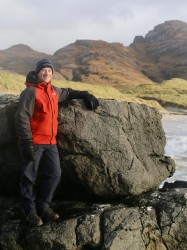BibTex format
@article{Nathwani:2022:10.1007/s00126-021-01086-9,
author = {Nathwani, C and Wilkinson, J and Fry, G and Armstrong, R and Smith, D and Ihlenfeld, C},
doi = {10.1007/s00126-021-01086-9},
journal = {Mineralium Deposita: international journal of geology, mineralogy, and geochemistry of mineral deposits},
pages = {1143--1166},
title = {Machine learning for geochemical exploration: classifying metallogenic fertility in arc magmas and insights into porphyry copper deposit formation},
url = {http://dx.doi.org/10.1007/s00126-021-01086-9},
volume = {57},
year = {2022}
}

